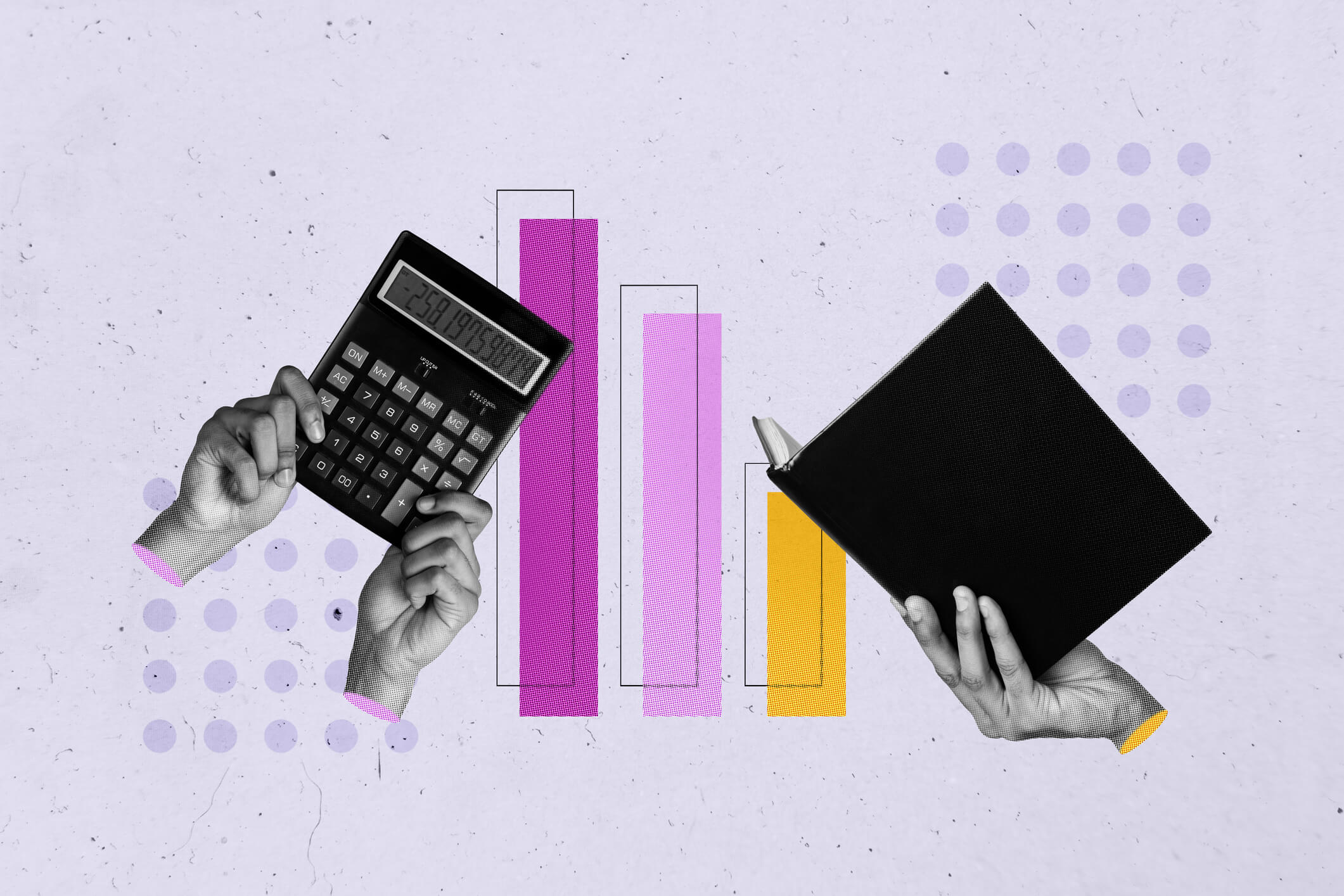By: Jennifer Brazer
Jennifer is the author of From Cubicle to Cloud and Founder/CEO of Complete Controller, a pioneering financial services firm that helps entrepreneurs break free of traditional constraints and scale their businesses to new heights.
Fact Checked By: Brittany McMillen
Why Virtual Bookkeeping is Growing in Popularity
Did you know that 40% of small businesses now rely on virtual bookkeeping, with 75% planning to adopt it in the next year? That’s not just a passing trend—that’s the business world redrawing its financial playbook. Across industries, business owners are skipping the clunky in-house methods for smarter, more efficient online bookkeeping solutions.
But you might be wondering: What makes it so appealing? Virtual bookkeeping takes the essential task of managing finances and transforms it into a cost-effective, remote-first solution powered by modern technology. Let’s explore why it works and how it delivers undeniable benefits for businesses of all sizes.

What is Virtual Bookkeeping?
Definition and scope
Virtual bookkeeping removes the need for a physical office to house your financial data. Instead, it hands the work over to professionals who manage your books remotely using advanced cloud-based accounting software like QuickBooks Online or Xero.
Unlike traditional bookkeeping, there are no office leases, paper stacks, or costly payroll bills to manage. A virtual bookkeeper brings the same level of expertise to your finances but does it remotely with the convenience of accessing records securely online anytime.
Technology: The backbone of virtual bookkeeping
Technology drives this incredible shift. Tools like cloud-based accounting software make real-time access, seamless collaboration, and peace of mind possible. Imagine logging into a dashboard that shows real-time updates of your financial health or setting up automated backups that protect you from costly errors.
Want to know more about why this technology is such a game-changer for businesses? Check out our guide on cloud-based accounting software benefits.
Benefits of Virtual Bookkeeping
Time savings
Time is a resource you can never recapture. That’s where remote bookkeeping services come into play—they automate tasks like account reconciliation, payroll, and expense tracking. Consider this: businesses using cloud tools experience a 30% increase in productivity—the same productivity boost that revolutionized kitchen work when dishwashers became a household staple.
Want more insight into how accuracy transforms your financial management? See how streamlining the importance of reconciling accounting statements helps businesses thrive.
Cost savings
The financial advantages are impossible to ignore. According to the National Small Business Association, outsourcing your bookkeeping saves an average of $5,000 annually compared to maintaining an in-house team.
Take ABC Inc., for instance. By hiring a virtual bookkeeper, they slashed overhead costs by 40% while increasing productivity by 20%. These aren’t just numbers on a page—they’re dollars that can be reinvested in growth and innovation.
For small startups or solopreneurs struggling to make every penny count, outsourcing bookkeeping is a lifeline to affordable expertise.
The Rise of Virtual Accounting Services
Market trends and adoption rates
Remote work has permanently altered the fabric of business operations. According to a survey, 40% of small businesses have already embraced virtual bookkeeping, and it’s only accelerating from here. As traditional office models give way to flexible digital solutions, virtual accounting services are emerging as a cornerstone of modern financial management.
This evolution isn’t new—it’s reminiscent of the internet revolution in the 1990s that gave businesses newfound flexibility to expand beyond borders. Similarly, virtual bookkeeping is making it easier to adapt, cut costs, and thrive in today’s hybrid world.
Real-world success: XYZ Corporation
Let me tell you about XYZ Corporation. They were once bogged down by inefficiencies, spending heavily on outdated financial practices. After switching to virtual bookkeeping, their costs plummeted by 25% while financial accuracy soared by 30%. Suddenly, they had the tools and insights to make smarter, data-driven decisions for the company’s future.

How Virtual Bookkeeping Saves Time and Money
Efficient financial management
Streamlining your processes is more than convenient—it’s transformative. When manual processes like tax preparation and payroll are automated through cloud tools, financial management becomes less stressful and more effective.
In my 15+ years at Complete Controller, I’ve seen this firsthand with clients. Cloud-based solutions let business owners stay updated with real-time financial insights, enabling them to pivot and adapt quicker than their competitors. This efficiency is more than a boost—it’s a competitive advantage.
Affordable solutions for all budgets
One of my favorite things about virtual bookkeeping is how scalable it is. Need someone for just a few hours a week? That’s doable. Virtual CFO services? Also possible. With options tailored to any budget, businesses of every size can access the financial expertise they need without breaking the bank.
Benefits of Virtual Bookkeeping for Small Businesses
Tailored financial services
Small businesses deserve solutions that align with their unique challenges. Virtual bookkeeping provides just that—whether it’s detailed cash flow analysis or inventory tracking via tools like QuickBooks Online. For example, one small bakery owner we worked with was able to trim costs and stabilize cash flow, all with the help of customized financial strategies.
Small business accounting: Help made easy
Running a small business is stressful enough without fretting over receipts and reconciliations. Virtual bookkeeping services streamline these responsibilities and provide peace of mind. Hiring a part-time virtual bookkeeper ensures you’re paying only for services you need, saving costs without sacrificing expertise.
The Role of Technology in Virtual Bookkeeping
Cloud-based solutions drive real-time decision-making
When people talk about “cloud technology,” it often sounds far-off. But in reality, cloud-based accounting means you can access financial data instantly and securely—even from your phone.
This technology not only integrates with other tools but also ensures data safety through encryption and automatic backups. To explore these benefits further, discover real-time financial data access.
Integration and customization made simple
Top platforms like Xero and QuickBooks Online make it easy to integrate financial data with payroll management, tax prep, and beyond. They allow you to customize reports, predict trends, and even integrate with other business tools.
Hiring a Virtual Bookkeeper: What to Consider
Choosing expertise, you trust
When outsourcing bookkeeping, experience matters. Look for providers with knowledge of your industry, excellent client reviews, and flexibility in services. For recommendations, explore our guide on choosing the best virtual bookkeeping services.
The right bookkeeper doesn’t just crunch numbers—they empower you to make informed financial decisions. And trust me, your business deserves nothing less.
Conclusion
Virtual bookkeeping isn’t just about numbers—it’s a smarter, faster way to manage your business finances. From slashing overhead costs to increasing accuracy, the benefits are transformative.
So here’s my challenge to you: take that leap and step into the future of financial management. Trust me, you won’t look back. Visit Complete Controller today for tailored solutions that will elevate your business to new heights.

FAQ
What is virtual bookkeeping?
Virtual bookkeeping uses cloud software to manage finances remotely.
Can virtual bookkeeping save me money?
Yes! Many businesses save thousands by avoiding full-time salaries and office overheads.
Why is cloud-based accounting important?
Because it provides 24/7 access to secure, real-time financial updates.
What should I look for in a virtual bookkeeper?
Look for industry expertise, solid reviews, and flexible service options.
Does virtual bookkeeping include financial advice?
Absolutely. Virtual CFO services offer strategic insights to grow your business.
 About Complete Controller® – America’s Bookkeeping Experts Complete Controller is the Nation’s Leader in virtual bookkeeping, providing service to businesses and households alike. Utilizing Complete Controller’s technology, clients gain access to a cloud platform where their QuickBooks™️ file, critical financial documents, and back-office tools are hosted in an efficient SSO environment. Complete Controller’s team of certified US-based accounting professionals provide bookkeeping, record storage, performance reporting, and controller services including training, cash-flow management, budgeting and forecasting, process and controls advisement, and bill-pay. With flat-rate service plans, Complete Controller is the most cost-effective expert accounting solution for business, family-office, trusts, and households of any size or complexity.
About Complete Controller® – America’s Bookkeeping Experts Complete Controller is the Nation’s Leader in virtual bookkeeping, providing service to businesses and households alike. Utilizing Complete Controller’s technology, clients gain access to a cloud platform where their QuickBooks™️ file, critical financial documents, and back-office tools are hosted in an efficient SSO environment. Complete Controller’s team of certified US-based accounting professionals provide bookkeeping, record storage, performance reporting, and controller services including training, cash-flow management, budgeting and forecasting, process and controls advisement, and bill-pay. With flat-rate service plans, Complete Controller is the most cost-effective expert accounting solution for business, family-office, trusts, and households of any size or complexity.














